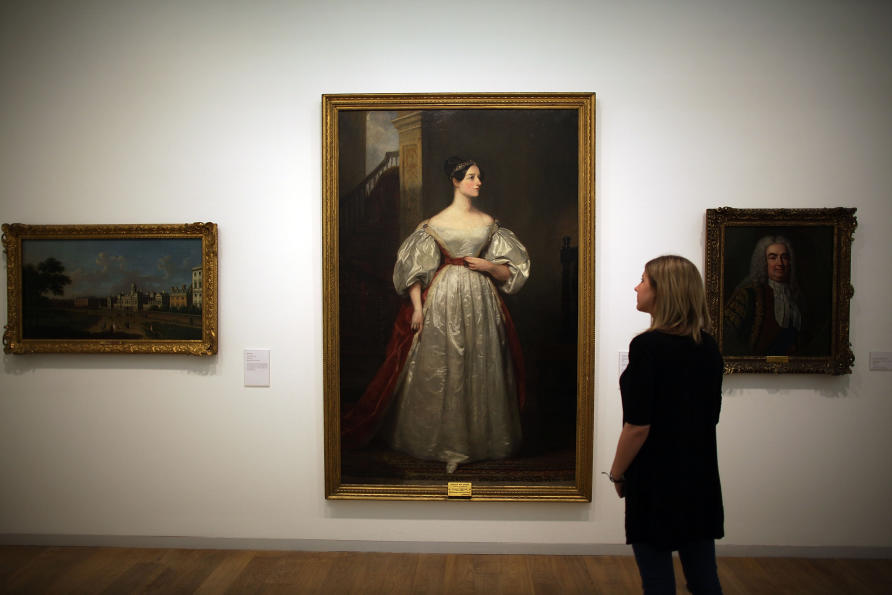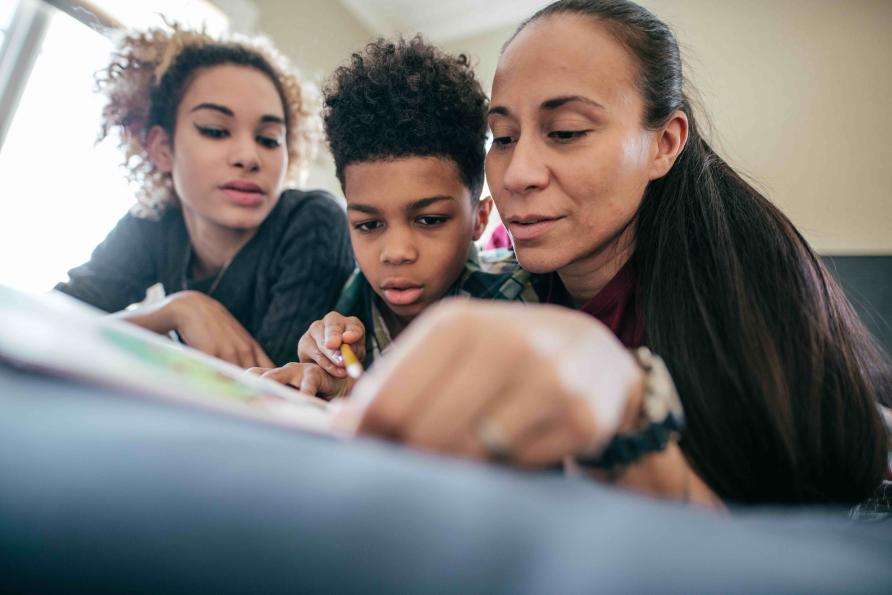
04 Mar The importance of teaching boys about brilliant women
By normalising brilliant women to our daughters and our sons, we make room for those women. If we don’t, it becomes a real problem for successful women when those boys become men, reports researcher, Dr Dana McKay
On International Women’s Day, like many people, I will read books about female heroes like Ada Lovelace to my daughter. But I will also read about them to my son.
The Little People, Big Dreams books began life focusing on inspiring women including Marie Curie, Frida Kahlo and Coco Chanel, to name a few.

They have since expanded to include men – Muhammad Ali, Stephen Hawking and Martin Luther King.
The reason these books initially focused solely on women was because the author wanted inspiring books for her nieces. She expanded that focus because “uniqueness includes boys too”.
While all children need role models they can see themselves in, the assumption that boys don’t want or need to hear about successful women is a real problem for successful women when those boys become men.
Statistics tell us that fields like philosophy, physics and technology where ‘brilliance’ or ‘genius’ are considered key characteristics of successful people are still hostile to women.
The gap in ‘genius’ isn’t one of performance, but of perception. But, what about gender balance in technology?
We have seen an enormous shift from programming being considered ‘women’s work’ in the early days of computing, to it now being a near-exclusive and increasingly male pursuit. If it were only men that used or were affected by technology, this wouldn’t be a problem.
This isn’t the case.
Recent research I worked on in collaboration with Dr Suelette Dreyfus, Professor Jeannie Paterson and Professor Shanton Chang is one of the many studies that demonstrate women are disadvantaged by technology designed by (and arguably for) men: AI algorithms fail to recognise women’s voices, and advertise lower-paid jobs and poorer housing stock to women.
Beyond artificial intelligence, social media platforms designed for men are unsafe for women; Amnesty International recently labelled Twitter “toxic” for women and girls.
So how did we end up here?
We know that the bias begins very early, at school age. Boys are more likely to be given computers or technology as gifts than girls and are more likely to have men in their family tinker with it alongside them.
The ‘genius’ focus creates a ‘brogrammer’ hyper-focused stereotype that is less likely to appeal to women and girls. By the time young people reach university age, there’s a confidence and interest gap that sees few women start technology degrees, and ever fewer complete them.
Even once degrees are completed, women struggle to get venture capital for startups, and when they work for other people, they leave the field at much higher rates than men due to poor satisfaction with their working environments, and lack of opportunity for promotion.

There are now many efforts that aim to measure and address these problems.
Numerous programs encourage women and girls to consider careers in computing, and address the barriers they face in doing so. Some techniques, like designing real-world impact into curricula, creating a cohort experience for women, and supporting novice programmers to build their confidence away from their more expert peers are well known.
Others are less clear, and being researched by (for example) Dr Melissa Rogerson, Associate Professor Jenny Waycott and Associate Professor Nic Geard in collaboration with Google, right here at the University of Melbourne.
Still other efforts, like my own work with Dr George Buchanan and Huiwen Zhang, have begun to measure the progression of women in computing.
In academic human-computer interaction (a field where women are typically well-represented), we have noticed that women participate in local conferences at similar rates to men, but that their publication rates drop at international conferences, particularly as co-authors.
This points to a situation where men are more likely to be invited to a team than women.
Measurement is important, because it gives us a baseline, and a way of determining who is trying to fix things: this is partially why many large companies now publish diversity reports. It also allows shareholders to hold companies to account, as they have with Apple.

Other researchers, including Dr Kobi Leins, Dr Marc Cheong and Dr Simon Coghlan, have shown that women are more disadvantaged in highly technical fields, and have promoted an ‘ethics of care’ approach to addressing this – that is, organisations taking moral and legal responsibility for the representation and experiences of women.
The one area that we are not addressing, though, is the culture of men in computing.
It is male venture capitalists who don’t fund women, and male programmers who exclude women from their teams. Men are the CEOs of all the major tech companies (Google, Facebook, Twitter, Microsoft, Apple, Amazon, Snap), and they sign off on (or don’t sign off on) codes of conduct.
While the most egregious abuses are addressed (such as Google engineer, James Damore’s missive on why straight, white men are the best programmers) the culture that facilitates these abuses remains.
We can promote technology careers to women all we like, but if the men who are the current gatekeepers of these careers don’t make room for women, ultimately all we will have is women with broken careers and broken hearts from finding that leaning in, and dealing with their ‘imposter syndrome’ (which is actually systemic bias) just isn’t enough.
So, what can we do? Well, if the culture of computing starts in school, so too can a culture of accepting women.

Alongside teaching our girls that they can code, we need to teach this to our boys as well. I’m doing this by reading about inspiring people of all genders to both of my children: at first it was my set of Value Tales from the 1980s, but now we are moving into Little People: Big Dreams and the Extraordinary Lives books.
Together, we are reading about Alan Turing, sure, but also Ada Lovelace and Katherine Johnson, alongside many other inspiring women and men from outside the field of technology.
I also talk to them about the lost women of technology, like Karen Sparck Jones, who did the work founding modern search engines, and Klara von Neumann, who did the work underpinning nearly every weather app we use today.
While I am merely an anecdote, in my house, my approach is working.
When my eight-year-old son heard me tell a story about a conference incident where women were unfavourably compared to a computer game (an incident that would now be addressed under the code of conduct), he asked “why would he say that? It’s just wrong, and very rude”.
By normalising brilliant women, we make room for them. And to do that, we have to talk not just to our daughters, but also to our sons.
Dr Dana McKay, Lecturer, School of Computing and Information Systems, Faculty of Engineering and Information Technology, University of Melbourne
Banner: Getty Images
This article was first published on Pursuit. Read the original article.




